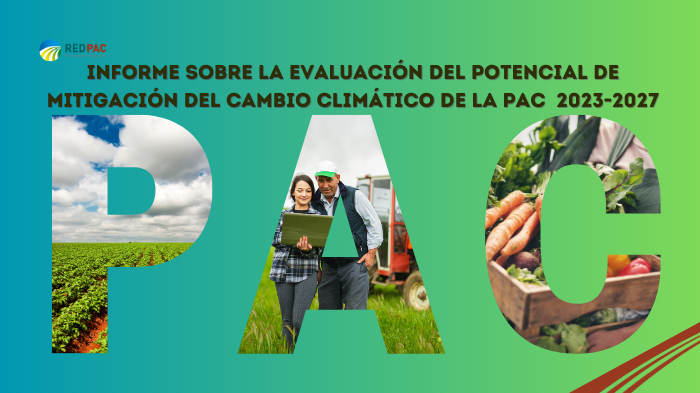
27 de November de 2024
Cambio climático y gestión de recursos naturales
The European Commission publishes a report estimating the potential of CAP 23-27 to help reduce the impact of climate change.
- The European Commission publishes a report estimating the potential of CAP 23-27 to help reduce the impact of climate change.
- The conclusions indicate that the CAP can mitigate up to 31 million tonnes of CO2 equivalent per year, mainly through carbon capture and reduction of soil emissions.
The new Common Agricultural Policy , launched in 2023, has a budget of €264 billion, focused on helping European farmers move toward a more sustainable and climate-resilient agricultural sector. Thus, the new CAP 2023-2027 is characterized by being greener, with 32% of total CAP funding dedicated to generating benefits for the climate, water, soil, air, biodiversity, and animal welfare. Twenty-four percent of direct payments are dedicated to so-called "eco-regimes," and 48% of rural development spending will support environmental and climate objectives.
Given that we are almost halfway through this CAP, it is time to take stock of the impact these measures are having. Hence, on November 22, the European Commission published a study assessing the climate change mitigation potential of 19 CAP Strategic Plans for the period 2023-2027.
It concludes that these Plans have an estimated mitigation potential of up to 31 million tons of CO2 equivalent (CO2e) per year, mainly through carbon capture and reduction of soil emissions.
More data
The report sheds new, previously unknown light on CAP measures and their impact on countering climate change:
- The three agricultural practices that contribute most to mitigating climate change ( 78% in total) are: crop rotation or diversification, expansion of cover crops, and organic farming.
- Ecoregimes represent 38% of the estimated mitigation potential and environmental and climate commitments within the framework of rural development, 30% .
- The study also indicates a potential positive contribution to protecting carbon sinks of 29 million tonnes of CO2e per year .
- 54% of the funds from the 19 PEPACs in the study are allocated to organic farming , followed by forest management (22%) and grassland protection (18%).
As an additional note, it should be noted that the CAP mitigation and environmental protection potentials are carried out annually , so data could be obtained every year between 2023 and 2027. However, the achievement of better and good results aimed at the 2030 climate objectives (the EU has the ambition to reach climate neutrality by 2050) will depend on the final adoption of the measures and their comparison with the previous CAP programming period, which is not possible to evaluate at this stage.
The study will also be completed with the incorporation of the remaining nine CAP Strategic Plans, scheduled for early 2025.
Green horizon
The 2024 Progress Report on Climate Action, published by the European Commission in October 2024, shows that agricultural emissions decreased by 2% between 2022 and 2023, with production remaining stable or increasing, ensuring food security for all EU citizens. Work is underway to further progress, particularly on carbon sequestration.
The CAP strategic plans They allocate 32% of the total CAP budget to voluntary actions that promote environmental, climate, and animal welfare objectives. Thirty-five percent of EU agricultural land should benefit from actions to sequester carbon and reduce nitrous oxide emissions.
Progress has also been made in safeguarding the sustainable management of natural resources, with efforts in soil protection, with voluntary practices covering 47% of agricultural land in the European Union (EU). Beyond the CAP, many EU funds, such as LIFE , Horizon Europe (within which the Soil Mission is framed ) and the Cohesion Funds, are available to promote carbon removal.









